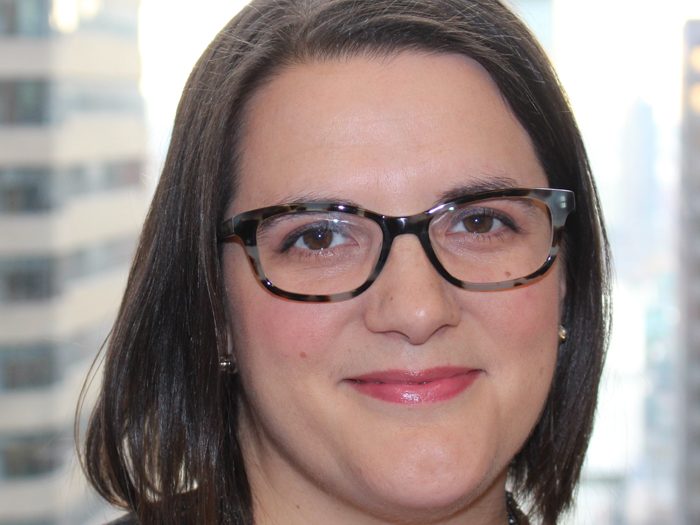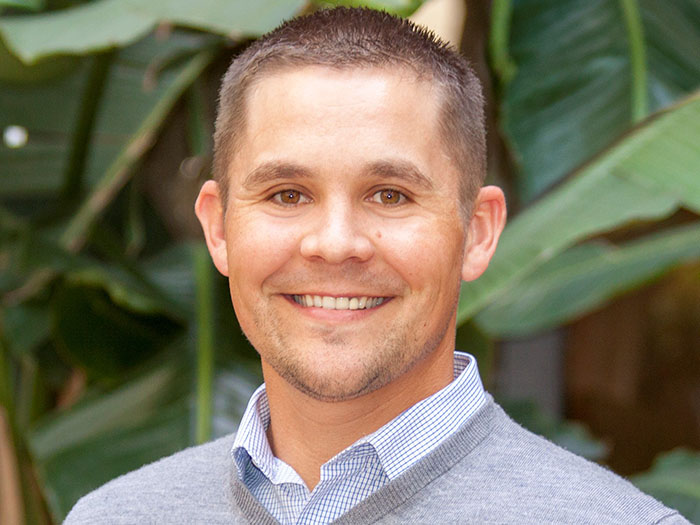Fine Arts
Eight Questions for 2017 Power Broker Mary Pontillo

Intrigued by the unique world of risk she handles, Risk & Insurance® asked (Risk Strategies Company subsidiary) DeWitt Stern Vice President and 2017 Power Broker® winner Mary Pontillo to tell us more about her love for fine art and why helping to cover risk in the art world means so much to her.
R&I: Mary we know you’ve got a background in art history. It must be very fulfilling then for you to work in the business of insuring art. Tell us more about your connection with art and artists and what it means to you.
MP: The only way I would be happy in the insurance industry is by doing what I’m doing; insuring artwork. It’s often the case that people in the art world don’t come from a business background. I feel I can help art-oriented people understand something both very esoteric and important. I speak their language and essentially become a translator of insurance jargon into something an art-oriented person can understand.
For instance, when I sat down for the first time with a well-known artist to discuss what he wanted out of an insurance payment, it was deeply gratifying. He had never really thought about how he’d use his insurance or what he expected from a claim. Being able to counsel one of the most famous living artists on something like this was quite special for me.
R&I: Who are some of your favorite artists, past and present?
MP: I dedicated a great deal of time to studying early 20th Century American art so I love artists like Marsden Hartley and Guy Pene du Bois.
Janine Antoni’s work always makes me think. Her “Lick and Lather” work consisting of self-portrait busts – half made of chocolate and half made of soap, the soap lathered and chocolate licked — always makes me think in a circular way. What if she licked the soap? I love artwork that gives me a visceral response like hers.
Gerard Richter’s technical abilities stop me in my tracks.
I own a Ghada Amer screen print and dream of the day I will own one of her prints with vellum and embroidery.
R&I: Tell us about a devastating art loss and how you helped the insured to recover.
MP: Nothing compares to the days, weeks and months after Superstorm Sandy. Beginning at midnight, when Sandy hit NYC, claims reports poured in. The first was from a museum client via text as I was trying to get a few hours of sleep during the intense storm. A colleague and I both lived in Queens and the few days following Sandy we were the only people on our team with electricity. We were able to log on and set everyone’s out of office messages to forward to our cell phones and email addresses.
Clients that I’ve known for years — some of the most stoic people — were facing the worst situations their businesses had ever seen. I’ll never forget one of the most well respected dealers in the industry calling me and saying: “I am not exaggerating when I say that this is absolute devastation.”
Knowing that I was the voice of calm and direction made me feel like all of the policies I’ve sold and serviced over the years came to life. We walked clients through triage steps over the phone and connected them with claims adjusters. Those first 72 hours were some of the most intense and stressful while helping claims adjusters, my colleagues on the ground in Chelsea and Brooklyn, and my clients through the recovery process.
I would speak to a frantic client on day one after Sandy, try to calm them down and tell them when to expect the claims adjuster. I’d then speak to them on day two after they met with the claims adjuster — the best thing was to hear: “After meeting with my claims adjuster this morning, I felt so much better.”
Clients that I’ve known for years — some of the most stoic people — were facing the worst situations their businesses had ever seen. I’ll never forget one of the most well respected dealers in the industry calling me and saying: “I am not exaggerating when I say that this is absolute devastation.”
R&I: From what we gather, the shipping of art and art collections is one of the thornier risk management and risk transfer challenges. What “tales of the road” can you tell us about art shipment risk management challenges you have faced and overcome?
MP: I handle many art warehouses, packers and shippers, as well as dealers, collectors, museums, foundations, etc. so I understand both sides of these transactions very well. Some of the most common issues that come up involve the documentation shippers require which severely limits their liability. It’s important to understand these technicalities of the shipping process in order to give art clients proper advice.
One of the most interesting situations I’ve found myself in was a client moving into an upper floor in a building in Manhattan. Due to the size of many of the artworks, they had to have the works rigged via crane through a window in the apartment. We had to get the insurance company on board, approving each and every work that was going to be rigged. The job was delayed a number of times due to high winds. On the final day permits were available from the city, the insurance company and I were there and watched the whole process. Little did we know, an earthquake struck NYC at the same time the works were suspended 30 floors in the air. We felt nothing on the ground but the workers in the apartment felt it. Luckily it had no effect on the artwork, but it’s a good story!
R&I: “Event Cancellation Expense” coverage has got to be an area of interest for art exhibitors these days, given the interruptions we have due to terrorist acts and instances of political upheaval. Can you give us your take on this coverage and the appetite for it given the state of the world today?
MP: There have been two instances that had some broad effect on the art world: the volcanic activity in Iceland back in 2010 which canceled flights around the same time as the London Print Show and the Paris Photo show closing early due to the Paris terror attacks.
Directly after the Paris incident, we went to our London broker to develop a program for Event Cancellation coverage. We were able to set up a policy that would cover lost business due to artworks or key employees not arriving (as in the case of air traffic affected by the Volcano) due to things outside of their control as well as part of the event being cancelled. We can add this onto a Lloyd’s Dealer policy or issue as a stand-alone policy. As time passes from these events, people feel less inclined to purchase these kinds of coverage. In 2017 this is a product we are re-emphasizing as it is unique, pragmatic and reasonably priced.
R&I: High net worth insurance is a sector the carriers are devoting a lot of resources to. Without naming names tell us what you can about some of the private collections you insured and the challenges you faced?
MP: We have some private collectors whose collections are relatively stable with few loans and the occasional purchase but on the flip side, we have private collectors who loan, buy, sell, consign, and collateralize artwork with great frequency. There are some collectors who send us updates every single day about such transactions.
A few of the more challenging, but also very interesting, aspects of these transactions are negotiating complex loans and ensuring proper insurance is in place for loans using the art collection as collateral. When lending their artwork, different collectors have different requirements for museums and galleries. Sometimes these requirements are quite rigorous and require a good deal of negotiation before the loan terms are agreed upon. These transactions require a nuanced approach — understanding the attitude of the collector toward the loan and ensuring we adequately protect the client while ensuring insurance is not the reason the loan negotiations stall.
R&I: What are some current, pressing risk management issues for museums? We’d imagine cyber threats such as spear-phishing have got to be among them.
MP: Museums, dealers, and foundations are all being affected by social-engineering threats, wire funds transfer fraud and the like. Almost every week we get notification from a client of a hacking attempt or, unfortunately, a few successful wire transfer frauds where clients have lost money. The Art Dealers Association of America warned their member-dealers of these problems a few times. We have also been emphasizing these attacks with our clients and highlighting the coverages that can help protect them from such attacks (cyber, crime including social engineering, etc.). Unfortunately, while the coverage begins at a very reasonable premium, very few policies have been purchased.
R&I: Do you know how many times you’ve won the Power Broker® designation as a Fine Arts broker, or is it a case of “who’s counting?”
MP: I honestly don’t know. I took a year off when I had a baby and encouraged my entire team to apply especially since they were the ones who took such great care of my clients while I was on maternity leave. Being in a field dominated by female Power Brokers is very satisfying. As a manager of a team of seven women, I love seeing them grow (some from beginning as our departmental assistants) and receive these kinds of awards. Advocating for the women around me and seeing them succeed is the most rewarding aspect of my job.
For the record, Mary’s Power Broker® win in 2017 was her sixth.-eds










